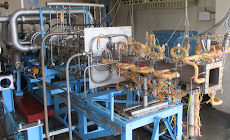
The satellites will be launched into low Earth and geostationary orbits and will be equipped with artificial intelligence (Al) to improve geo-intelligence and communication between satellites for better threat mitigation.
Additionally, the CCS has also approved the $3.9 billion purchase of 31 weaponized Predator drones from General Atomics, to complement the surveillance capabilities of the SBS-III mission. General Atomics (GA) is a California, US based company that specializes in defense and diversified technologies, including energy, defense, robotics, and unmanned aircraft.
The Space Based Surveillance (SBS-III) project is a significant initiative by the Indian government to enhance its surveillance capabilities through space-based technology.
In Phase-I (2001), 4 satellites were launched, under the aegis of the then prime minister Atal Bihari Vajpayee. In Phase-II, 6 satellites were launched in the year 2013. And, now in 2024, 52 surveillance satellites have been approved by the CCS, to launch.
Indian Space Research Organisation (ISRO) is responsible for the development and launch of these satellites.
National Security Council Secretariat works alongside the Defence Space Agency under the integrated headquarters in the Defence Ministry to handle the project. Defence Space Agency plays a crucial role in the project, focusing on enhancing India's defense capabilities.
These organizations and entities are working together to enhance India's surveillance and defense infrastructure.
Development of the Spy Satellites
ISRO will follow a comprehensive process to develop these spy satellites. Here's an overview of the steps involved:1. Design and Development: The satellites will be designed and developed at the U R Rao Satellite Centre (URSC). This involves creating detailed designs, selecting materials, and developing the technology.
2. Assembly and Testing: Once the design is finalized, the satellites will be assembled and rigorously tested to ensure they meet all specifications and can withstand the harsh conditions of space.
3. Launch Vehicle Preparation: The satellites will be launched using ISRO's launch vehicles, such as the Polar Satellite Launch Vehicle (PSLV) or Geosynchronous Satellite Launch Vehicle (GSLV), depending on the payload and orbit requirements.
4. Launch: The satellites will be launched from the Satish Dhawan Space Centre on Sriharikota Island, near Chennai.
5. Deployment and Operation: After launch, the satellites will be deployed into their designated orbits and will start their operational phase, providing surveillance data and enhancing India's national security.
ISRO's expertise in satellite technology and its successful track record in launching and operating satellites make it well-equipped to handle this ambitious project.
















 IndianWeb2.com is an independent digital media platform for business, entrepreneurship, science, technology, startups, gadgets and climate change news & reviews.
IndianWeb2.com is an independent digital media platform for business, entrepreneurship, science, technology, startups, gadgets and climate change news & reviews.



